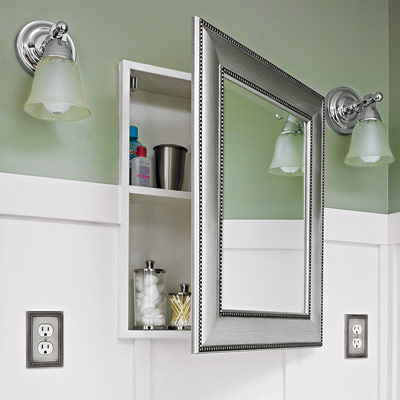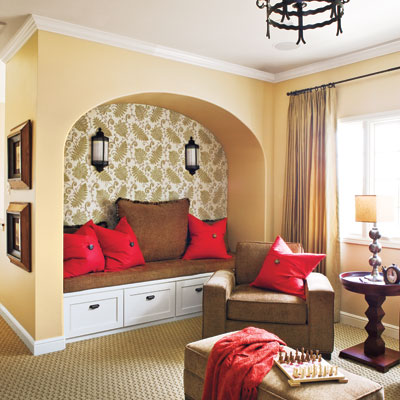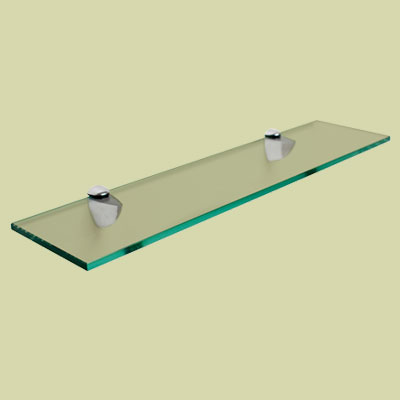 In the age of HGTV, home and garden magazines, Pinterest, and more, the thought of remodeling your home might be tempting. After all, there’s a lot to love about redesigning, updating, and maximizing your space. Plus, whether you’re thinking of joining the do-it-yourself crowd or prefer to let hired professionals do the heavy lifting, any number of popular TV programs and encouraging articles make home remodeling look like a piece of cake. But before you start measuring walls and making demolition plans, Dan Fritschen, founder of www.remodelormove.com, encourages you to stop a moment and really consider what you’re about to jump into.
In the age of HGTV, home and garden magazines, Pinterest, and more, the thought of remodeling your home might be tempting. After all, there’s a lot to love about redesigning, updating, and maximizing your space. Plus, whether you’re thinking of joining the do-it-yourself crowd or prefer to let hired professionals do the heavy lifting, any number of popular TV programs and encouraging articles make home remodeling look like a piece of cake. But before you start measuring walls and making demolition plans, Dan Fritschen, founder of www.remodelormove.com, encourages you to stop a moment and really consider what you’re about to jump into.
“Remodeling isn’t for everyone, and many times it could be a downright bad decision,” says Fritschen. “It’s well worth your time to pause and consider what your proposed project entails, and whether the commitment is worth the time, energy, and money you’ll end up pouring into it.”
So, how can improvement-oriented homeowners determine whether remodeling is a good idea or not?
Here, Fritschen shares seven of Remodel or Move’s important considerations that can indicate whether or not to remodel. So before you launch into your own project, ask yourself these questions:
Which are we more excited about: Hawaii or hardwood floors? Yes, that updated living room you bookmarked in a magazine looks fantastic. But in the grand scheme of things, how much joy will it bring you? For instance, would you be happier with a trip to (and later memories of) a pristine white sand beach or with brand-new flooring?
“It may sound elementary, but give some serious thought as to whether you’d rather spend your time and money on a vacation or on a new and improved living space,” Fritschen advises. “Even if you don’t end up booking your trip immediately, leaning toward ‘vacation’ over ‘remodel’ is a good barometer for determining how important an updated home actually is to you. And the truth is, unless a specific renovation really is your heart’s desire, you’d probably be better off traveling than pouring money into an already-functional room.”
Are we the Joneses? It’s a fact of life: Everybody wants to keep up with the Joneses. (In fact, Fritschen says, that’s a very popular reason for deciding to remodel!) Before you hit up the hardware store, though, take a moment to consider whether or not you are the Joneses. Is your home already one of the biggest or nicest in the neighborhood? If so, it’s likely that the addition or remodel you’re planning will end up being a lot of work that won’t significantly increase the value of your home.
“If you really want to remodel because you love the design and remodeling process, then go ahead,” urges Fritschen. “But if all you really want is a bigger or nicer home and you already have the biggest and nicest in the neighborhood, it may make more sense to move to a new home that has all the features you want in a neighborhood full of larger and nicer residences.”
Can we really afford this? Even on sticking-to-a-budget-themed renovation shows, the main emphasis is on the work being done and not on the financial decisions being made. So what many homeowners fail to fully understand is that remodeling usually costs a lot, even when you’re going the DIY route and looking for bargains.
“If you’re not exactly rolling in the dough, don’t write off your remodel entirely,” Fritschen advises. “There are smart, financially savvy ways to remodel, including using money from savings, using a 203k mortgage, or refinancing and getting cash back on your home. However, if the only ways you can pay for your remodel are to tap into retirement accounts or use your credit cards, then the cost of remodeling increases significantly and is then much harder to justify. If you can’t pay for a remodel the ‘smart’ way, then it is better to wait a few years and focus on saving up the money you’ll need.”
Is the finished product worth the stress and mess? Again, this is an area in which TV shows can be misleading. Think about it: All of the chaos, frustration, debris, and stress are compressed into a 30-minute or hour-long slot. (And magazine or internet articles might not address these factors at all!) In the real world, though, even the most mellow and easy-going people can find remodeling to be a difficult process.
“The decision-making, the expense, the mess, the interruption to routines…it all makes remodeling a potential nightmare,” points out Fritschen. “So carefully consider everyone’s response to the turmoil of remodeling. If you suspect that some in your household won’t be able to effectively deal with the stress, then deciding against remodeling—or putting it off—could be a better decision.”
Is our income secure? For obvious reasons, if you aren’t sure of your income stream, spending all of your savings on a remodel isn’t a smart choice—especially when the economy isn’t exactly stable and thriving.
“If you aren’t sure about your job or other source of income for the next few years and have just enough in savings to pay for the remodel, think about waiting,” says Fritschen. “For your peace of mind, and perhaps the outcome of the project, it’s worth waiting until you have saved more or are 100 percent confident that you will have a steady income in the future.”
How long will we be in this house? If there’s a chance you may be moving soon, Fritschen says there are two very good reasons not to remodel. First, remodeling is a lot of work. And secondly, in many cases, the cost of updating your home might exceed the amount your home appreciates after the work is finished.
“In each of these cases, the only way to justify a remodel is by quality of life improvement—but if you are moving a few months or even years after the remodel is done, then you might never be able to truly enjoy the updated home enough to justify the costs,” he shares.
Is this a good investment? As Fritschen has pointed out before, in many cases, the cost of a remodel might exceed your home’s overall increase in value once the project is complete.
“I want to stress that it’s very important to know going in that you might not make money, and to be okay with that,” he emphasizes. “Do your research before making any commitments so that you’ll have a fairly accurate idea of what to expect in terms of cost and your home’s updated value. If the numbers aren’t promising and the thought of not making a clear profit when you eventually sell your home horrifies you, you might want to rethink your renovations.”
“Always make sure you have an accurate perspective on when a remodel makes sense and when it doesn’t,” Fritschen concludes. “Remember, the project should improve not only your home, but also your happiness and quality of life—without breaking the bank or driving your family around the bend. Still not sure? take advantage of the free Should I Remodel? Online Calculator at http://www.remodelormove.com/should-you-remodel








